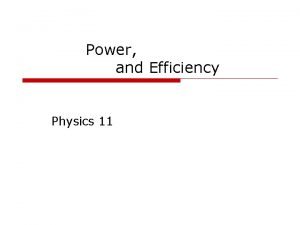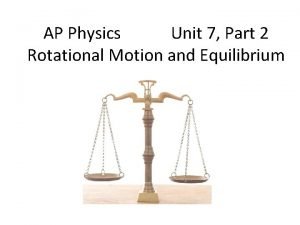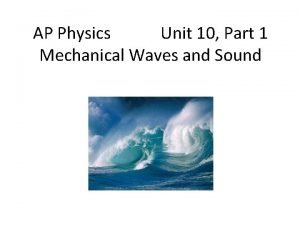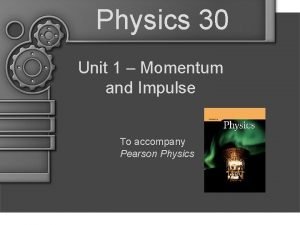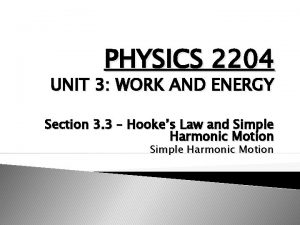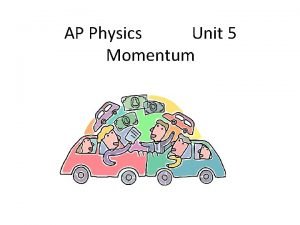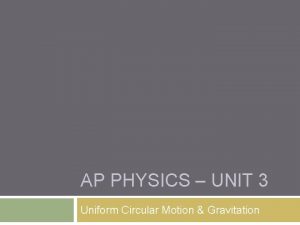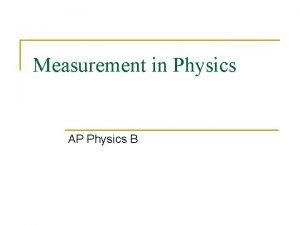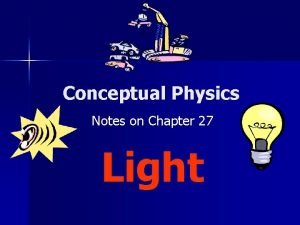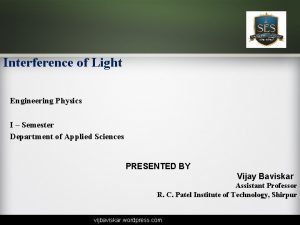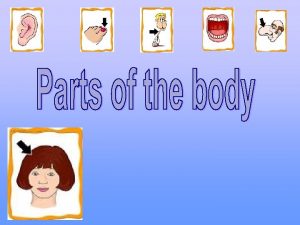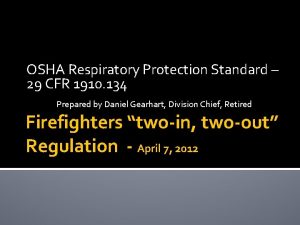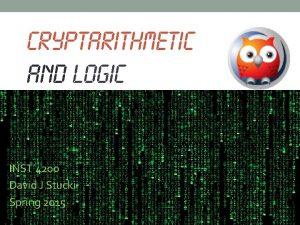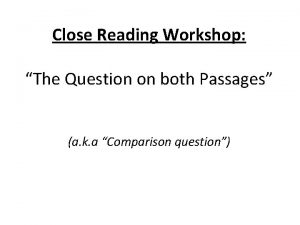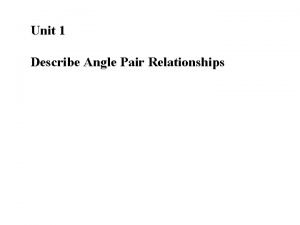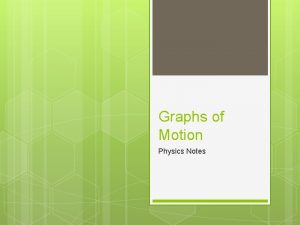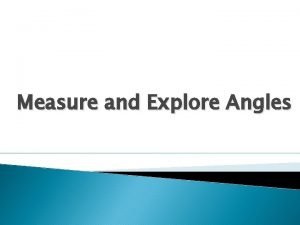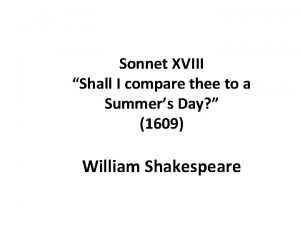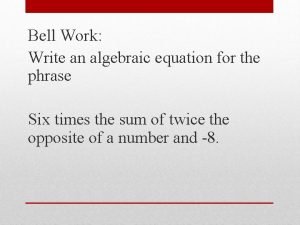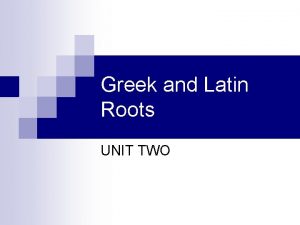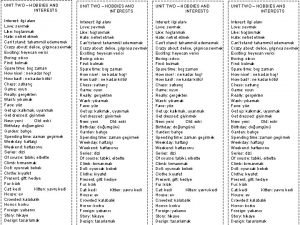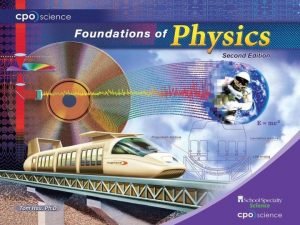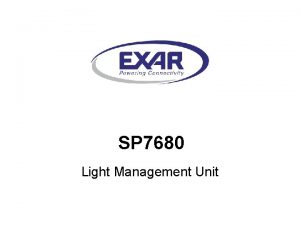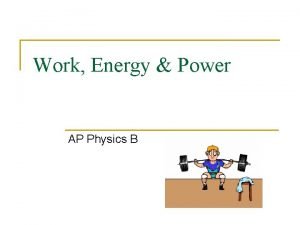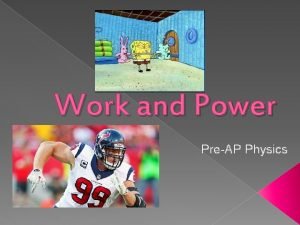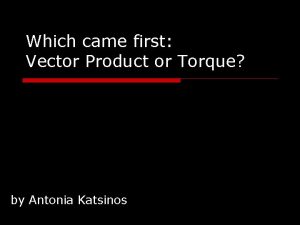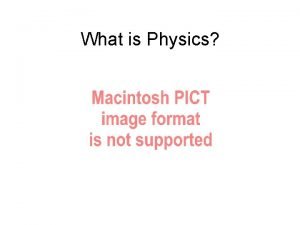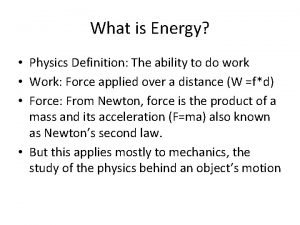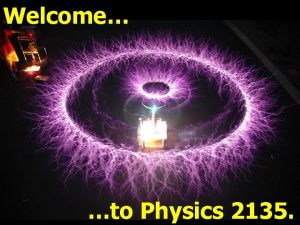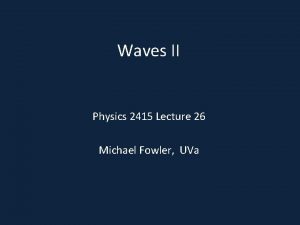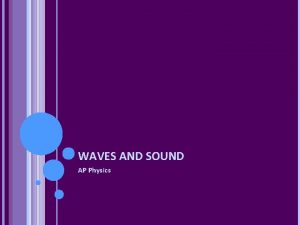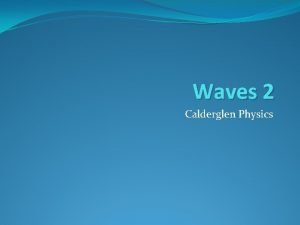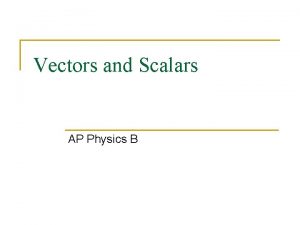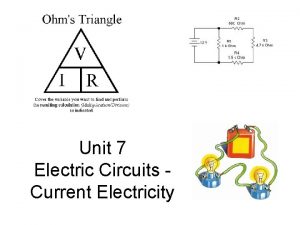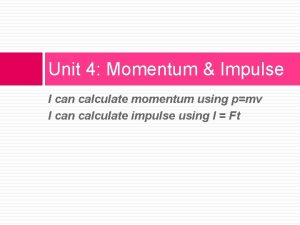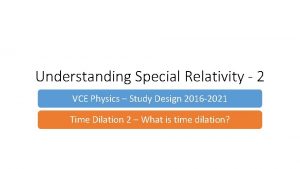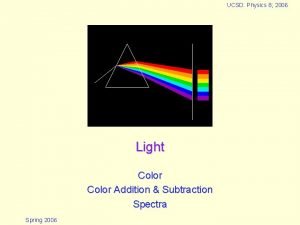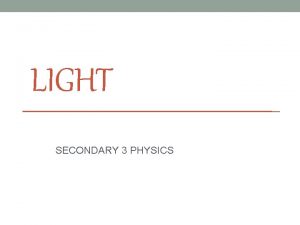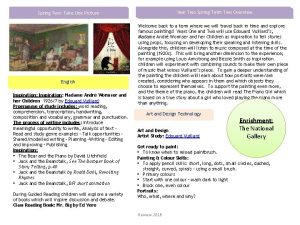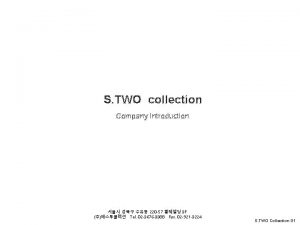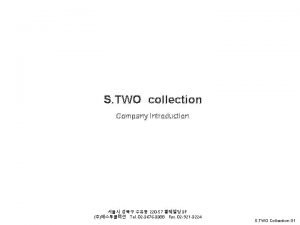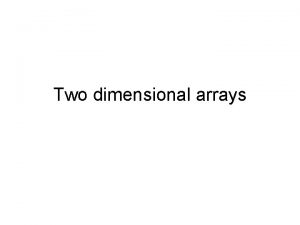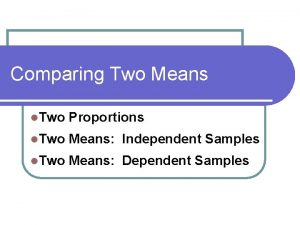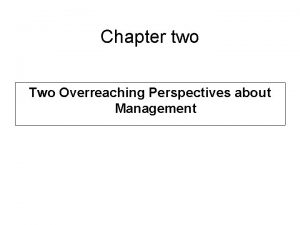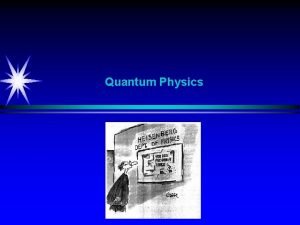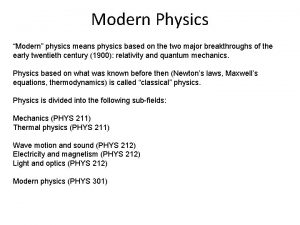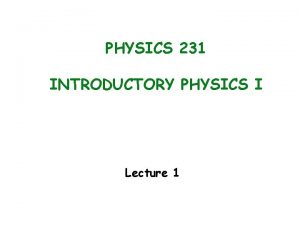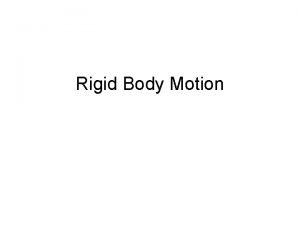Light PHYSICS UNIT TWO Light What is light
















































































- Slides: 80

Light PHYSICS – UNIT TWO

Light What is light? Light exhibits properties of both waves and particles. Light as a wave and a particle https: //www. youtube. com/watch? v=J 1 y. IAp. Zt. Los Properties of light https: //www. youtube. com/watch? v=b. P 4 i 1 KUf. B 3 o

Waves Light as a wave Light behaves in a way that is consistent with our conceptual and mathematical understanding of waves, as it…… • Reflects like a wave • Refracts like a wave • Diffracts like a wave • Undergoes interference like a wave Now we will take a closer look at waves to understand what all this means

Waves What are waves? • A disturbance that travels through a medium from one place to another. • They originate from a vibration that initially disturbs the medium. • They transport energy as they travel through the medium Lets view an example of energy transfer via waves. Guitar video The string is plucked, a wave transfers this energy to sound. You can see that different sided waves produce different sounds https: //mrsamsingyr 11 physics. wordpress. com/

Waves Transverse vs Longitudinal Waves are waves in which the particles of the medium are In Transverse Waves, the particles of the medium are displaced in a direction perpendicular (right angled) to the direction of the energy transport https: //www. youtube. com/watch? v=7 c. DAYFTXq 3 E displaced in a direction parallel to the energy transport.

Waves Transverse vs Longitudinal Waves are waves in which the particles of the medium are In Transverse Waves, the particles of the medium are displaced in a direction perpendicular (right angled) to the direction of the energy transport https: //www. youtube. com/watch? v=7 c. DAYFTXq 3 E displaced in a direction parallel to the energy transport.

Waves Longitudinal Waves are waves in which the particles of the medium are displaced in a direction parallel to the direction of the energy transport. Direction of the vibration through the medium The wave moves in this direction

Waves Transverse Waves are waves in which the particles of the medium are displaced in a direction perpendicular (right angled) to the direction of the energy transport The wave moves in this direction Direction of the vibration through the medium

Transverse Waves Pulsed vs Continuous Wave Pulsed Wave • When a single disturbance is passed through a medium • The wave carries the energy which gradually oscillates away once the energy is used eg. An Explosion or a Sudden Impact Continuous Wave • When a continuous disturbance is passed through a medium generated by repetitive motion • Energy is carried away in the form of a continuous wave eg. A vibration of sound waves from a speaker

NOW DO Problems from the alternative text Ex 1. 1 A Q 1, 2, 3, 4, 5, 6, 7

Transverse Waves Amplitude • Is a measure of how much energy the wave has. • Is measured from the midpoint to the peak of the crest (or bottom of the trough). • Can be defined as the maximum displacement from the average position. Crest Amplitude Trough

Transverse Waves • Wavelength ( λ ) Crest Trough

Transverse Waves • The Frequency of a wave is defined as ‘the number of complete cycles in one second’. • Units: Hertz (Hz) • 1 Hz = 1 cycle per second One complete cycle

Transverse Waves • Period - One complete cycle

Transverse Waves • Velocity of a wave

Transverse Waves Examples eg 1. A wave undergoes 42 vibrations in 60 seconds. a) Find the frequency of the wave. b) Find the period of a wave.

Transverse Waves Examples eg 2. On a guitar string, the trough of the wave travels 10 cm in 2 seconds. Find the speed of the wave in metres per second. .

Transverse Waves Examples eg 3. A bird lands on a lake, causing vibrations resulting in a ripple of 30 waves in 5 seconds. a) Find the frequency of the waves b) Find the period of each wave

Transverse Waves Examples eg 4. If waves on a lake vibrate at a frequency of 30 Hz and the wave crests are 1 cm apart, what is the speed of the waves?

NOW DO Problems from the alternative text Q 1. 2 A Q 1 – 7 Q 1. 3 A Q 1 – 4

NOW DO Problems from the alternative text Worksheet – Waves equations Q 1. 2 A Q 9 – 10

Behaviour of light Light can be absorbed, reflected or transmitted We will look closer at these behaviours, but firstly we need to look at another model for describing light.

The Ray model We can understand many phenomena involving light without having to use sophisticated models such as the wave model or the particle model. Instead, we describe light and it’s interactions with objects more simply according to the path it takes. To model and draw light, we can think of light travelling in a straight line path, called light rays. This is called the ray model.

The Ray model Light rays transmitted from a light source Transmitted light rays from the sun hit a tree – the shadow formed shows than light does not pass through the tree – where does it go? Some light is reflected – enabling us to see the tree Some light is absorbed – providing energy to the tree. Straight rays of light transmit through a curved medium – the light refracts and converges Rays of light reflect off the fish in the medium (water) and transmit through to a different medium (air) causing the rays to diverge due to the refraction.

Some Light Terminology Luminous – Objects that we see as they give off their own light. eg. sun, lamp. Non-Luminous – Objects that we see as light reflects off them. eg. people, book. Incandescent – A luminous object that produces light due to being heated. Brightness and colour changes depending on how hot the object is. eg. Gas heater/cooker – blue at source = hot! Yellow flame = cooler

Some Light Terminology Opaque – Opaque objects reflects some light and absorbs the rest. No light passes through. eg. A brick wall, tiled floor. Transparent – Objects that allow a significant amount of light to pass through. Some light may also be absorbed and/or reflected. eg. Clear windows, cling wrap. Translucent – Objects that allow a some light to pass through, but no clear image can be seen through the material. eg. Frosted bathroom windows, tissue paper.

Behaviour of Light Rays Ex 1. 1 B Q 1 – 6 Have a think about Question 2, attempt it and then we can do it together

Reflection off perfectly flat surfaces Light rays travel off a surface into the direction of the mirror and reflect off into the direction of the eye.

• Plane Mirror Reflection

Plane Mirror Reflection •

Behaviour of Light Rays – Reflection off irregular surfaces •

Behaviour of Light Rays – Forming images with a plane mirror • Images are a likeness of an object. • When viewing an object with a mirror, we see a virtual image. • Rays of light from the cats ear reflect off the mirror and enter the viewers eye and appear to come from a region behind the mirror. • The real image and the virtual image are located at equal distances from the mirror. “Real Image” “Virtual Image”

Behaviour of Light Rays – Drawing ray diagrams Summary, Drawing ray diagrams for plane mirror reflection https: //www. youtube. com/watch? v=OHq. YB 42 Wf. Zk

Drawing ray diagrams – Plane Mirrors “Virtual Image” “Real Image”

Drawing ray diagrams – Plane Mirrors Plane Mirror Reflection – The Image you see is: UPRIGHT, LATERALLY INVERTED

Behaviour of Light Rays - Reflection Ex 1. 2 B Q 1, 2, 4, 6, 7

Refraction • Light travels in straight line paths while travelling in a uniform medium. • When it passes through another medium, the light ray changes direction, or its path bends. • Refraction occurs as the light changes speed in different media, due to the change in density of different substances.

Behaviour of Light Rays - Refraction • This ‘constant’ value (n) changes depending on the pair of media

Behaviour of Light Rays - Refraction •

Behaviour of Light Rays - Refraction •

Behaviour of Light Rays - Refraction •

Behaviour of Light Rays - Refraction •

Behaviour of Light Rays - Refraction

Behaviour of Light Rays - Refraction •

• b) The light enters a different medium with a refractive index of 1. 7. What speed is the light travelling at in this medium?


Angle of Deviation The term angle of deviation refers to the difference between the Angle of incidence and the Angle of refraction

Apparent Depth •

Apparent Depth •

Apparent Depth •

Behaviour of Light Rays - Refraction Ex 2. 2 B Q 1 -10

Internal Reflection Depending on: • The angle of incidence, and • The medium that light is travelling from/to; a single light ray may be: * Refracted only * Both Reflected and refracted * Reflected only

Internal Reflection • Internal reflection involves light moving to a less dense medium (ie. Lower refractive index ‘n’ ) • As the angle of incidence of a light ray increases, more of the light ray is reflected and less refracted, as seen below. • As the angle of incidence increases, so does the angle of refraction

Internal Reflection – Critical Angle •

Total Internal Reflection • If the angle of incidence increases beyond the ‘critical angle’, no light is refracted – it is all reflected • This is called Total Internal Reflection

Critical Angle •

Behaviour of Light Rays Practical Activity

Behaviour of Light Rays Ex 2. 3 B Q 1 – Q 3 & Q 5 – 6 Research Questions Ex 2. 3 B Q 7 – 8 (all answers can be found within the text I sent to you)

Dispersion The separation of white light into it’s different colours is called dispersion. White light is made up of a series of colours, which separate in order: Red Orange Yellow Green Blue Indigo Violet

Dispersion The colours separate into this order as each colour: • Has a different frequency • Travels at slightly different speeds to each other in the same medium

Refractive Index of colour This means that the refractive index of a given medium varies for different colours of light travelling through the medium. Red travelling through a medium refracts the least, Violet refracts the greatest. ROYGBIV Refractive index increasing

Refractive Index of colour ROYGBIV Refractive index increasing • Which is still the same Snell’s Law that we saw last term…recall:

• b) The speed of the red light in the prism

• d) The speed of the violet light in the prism e) The angle through which the spectrum is dispersed

• b) The speed of the red light in the prism

• d) The speed of the violet light in the prism e) The angle through which the spectrum is dispersed

Polarisation • The transverse wave model of electromagnetic radiation, proposes that light and other electromagnetic waves travel in many planes. • The electromagnetic model of light has oscillating electric and magnetic fields at right angles to each other.

Polarisation • The blocking of transverse waves except for those travelling in a single plane is called Polarisation. Longitudinal waves cannot be polarised

Polarisation • Because of these observations of polarisation, light can be described as a transverse wave, rather than a longitudinal wave. • The polarisation of light is observed when it passes through some materials. • These materials which allow light waves in one plane to pass through, while blocking light in other planes are called Polarising Filters.

Dispersion Ex 2. 5 A Q 1, Q 3, Q 5, Q 6, Q 7, Q 9 Polarisation: Read pages 3 – 4 from your 2. 5 A Booklet, then do Ex 2. 5 A Q 2, Q 4, Q 10

Seeing Colour When we look at an object and perceive a colour, you are not necessarily seeing a single frequency of light. For example – You are looking at a shirt which appears yellow to your eye. In this instance, there may be several frequencies of light striking your eye and varying intensities. Your eye-brain system interprets the frequencies that strike your eye and perceive the colour to be yellow. The colour of the object IS NOT in the object, but rather in the light which reflects off or transmits through the object.

Primary Colours of Light • White is not a colour, but rather the presence of all frequencies of visible light – we have learnt this to be ROYGBIV • However this is not the only way of producing white light – it can be produced by combining only 3 distinct frequencies of light, providing they are widely separated on the visible light spectrum and combined at the correct intensity. • The most common set of 3 colours, which we refer to as the primary colours of light, are: Red, Green and Blue

Primary Colours of Light Adding 2 combinations of these colours together produces other colours. Red + Green = Yellow Blue + Red = Magenta Green + Blue = Cyan Red + Green + Blue = White

Secondary Colours of Light • We can refer to Yellow, Magenta, Cyan as the secondary colours of light, since they are produced by the addition of equal intensities of 2 primary colours of light. • Varying the intensity of the combinations will produce countless other colours • Play around with the widget to produce other colours www. wolframalpha. com/widget. Popup. jsp? p=v&id=827957100468 fbe 97741 fbd 144 f 66 199&title=Color%20 Addition&theme=red&i 0=0. 81&i 1=0. 66&i 2=0. 14&pod. Select=&includepod id=Color. Swatch%3 AColor. Data&includepodid=Color. Schema. Conversions%3 AColor. Data

Secondary Colours of Light • We can refer to Yellow, Magenta, Cyan as the secondary colours of light, since they are produced by the addition of equal intensities of 2 primary colours of light. • Varying the intensity of the combinations will produce countless other colours • Play around with the widget to produce other colours www. wolframalpha. com/widget. Popup. jsp? p=v&id=827957100468 fbe 97741 fbd 144 f 66 199&title=Color%20 Addition&theme=red&i 0=0. 81&i 1=0. 66&i 2=0. 14&pod. Select=&includepod id=Color. Swatch%3 AColor. Data&includepodid=Color. Schema. Conversions%3 AColor. Data

Complementary Colours of Light • Any 2 colours of light that when mixed together form white light are called complementary colours of each other. Red and Cyan are complementary colours of each other Which other combinations do you think may be complimentary? Blue and Yellow Green and Magenta

Colour Subtraction • This relates to colours being absorbed and reflected rather than added together • Materials contain atoms which are capable of selectively absorbing one or more frequencies of light. • We can say that colours which are absorbed are ‘subtracted’ in order to find out what colour is seen by the eye. eg. White light shines on a ball - ie. Red, Blue, Green are shining onto the ball. If Blue is absorbed and Red and Green are reflected, what colour does the ball appear to be?

Colour Subtraction eg. Cyan light is shining on the same material (ie. A material that is capable of absorbing Blue and reflects Red and Green). What colour light is reflected from the ball? Cyan light is produced by Blue and Green light. Blue light absorbed. Green light reflected C – B = (G + B) – B = G

eg. Magenta light shines on a material that absorbs blue. What colour does the material appear to be? Magenta light is produced by Red and Blue light absorbed. Red light reflected. Material Appears RED. M – B = (R + B) – B = R eg. Red light shines on a material that absorbs blue. What colour does the material appear to be? No blue light. Red light reflected. Material Appears RED.

eg. Blue light shines on a material that absorbs blue. What colour does the material appear to be? Blue light is a primary colour. Blue light absorbed. No colour is left to be reflected so, in the absence of reflected light, Material Appears BLACK Now Try Ex 2. 1 B Q 5, Q 6, Q 7, Q 9 Further Reading: Read Ch 2. 1 B and attempt Q 1, 2, 3
 Unit 6 review questions
Unit 6 review questions Light light light chapter 23
Light light light chapter 23 Into the light chapter 22
Into the light chapter 22 Light light light chapter 22
Light light light chapter 22 Why does it happen
Why does it happen University physics with modern physics fifteenth edition
University physics with modern physics fifteenth edition Physics ia simulation ideas
Physics ia simulation ideas Below you see two cases a physics student
Below you see two cases a physics student Efficiency physics unit
Efficiency physics unit Translational and rotational equilibrium
Translational and rotational equilibrium Ap physics 1 unit 7
Ap physics 1 unit 7 Ap physics 1 unit 10
Ap physics 1 unit 10 Physics 30 worksheet # 1 momentum
Physics 30 worksheet # 1 momentum Physics 2204 unit 3: work, power, energy
Physics 2204 unit 3: work, power, energy Physics grade 9 unit 3
Physics grade 9 unit 3 Unit 5 momentum 5.a center of mass
Unit 5 momentum 5.a center of mass Ap physics unit 3 circular motion and gravitation
Ap physics unit 3 circular motion and gravitation Water bed
Water bed Vce physics unit 1 and 2
Vce physics unit 1 and 2 Ap physics unit conversion
Ap physics unit conversion Conceptual physics chapter 27
Conceptual physics chapter 27 Interference of light engineering physics
Interference of light engineering physics Complementary and supplementary angles formula
Complementary and supplementary angles formula Two hands go clap clap clap
Two hands go clap clap clap Osha two in two out
Osha two in two out Two + two four cryptarithmetic solution
Two + two four cryptarithmetic solution Identify a key term used in both passages.
Identify a key term used in both passages. Vertical angles
Vertical angles When two curves coincide the two objects have the same
When two curves coincide the two objects have the same Both passages have a(n) tone
Both passages have a(n) tone Two nonadjacent angles formed by two intersecting lines
Two nonadjacent angles formed by two intersecting lines Maltificazione
Maltificazione Hamlet act 2, scene 1 summary
Hamlet act 2, scene 1 summary Two witches were watching two watches
Two witches were watching two watches Two by two table
Two by two table Shall i compare thee to a summer's day annotation
Shall i compare thee to a summer's day annotation Two witches watched two watches
Two witches watched two watches Two beer or not two beer shakesbeer
Two beer or not two beer shakesbeer Character foils in macbeth
Character foils in macbeth Unit 2 tattoo
Unit 2 tattoo Two unit multipliers
Two unit multipliers Root sta
Root sta Unit two
Unit two Unit surplus dan unit defisit
Unit surplus dan unit defisit Hyp opp adj triangle
Hyp opp adj triangle Si unit to english unit
Si unit to english unit Algebra 2 unit 1 practice test
Algebra 2 unit 1 practice test Contoh soal perhitungan unit cost rumah sakit
Contoh soal perhitungan unit cost rumah sakit Unit process and unit operation
Unit process and unit operation What is unit operation and unit process
What is unit operation and unit process Setiap unit akuntansi dianggap sebagai unit yang mandiri
Setiap unit akuntansi dianggap sebagai unit yang mandiri Unit 6 light doe
Unit 6 light doe Light management unit
Light management unit Put out the light
Put out the light Distinguish between photosystem 1 and photosystem 2
Distinguish between photosystem 1 and photosystem 2 The bouncing off of light.
The bouncing off of light. What materials do block light
What materials do block light Ap physics power
Ap physics power Relation between work and energy
Relation between work and energy Work energy theorem
Work energy theorem What is physics definition
What is physics definition Concept of work in physics
Concept of work in physics Right hand rule torque
Right hand rule torque Define solid state physics
Define solid state physics What is physics
What is physics Definition of energy in physics
Definition of energy in physics Mst physics 2135
Mst physics 2135 4 forces of nature
4 forces of nature Physics 102 uiuc
Physics 102 uiuc Standing wave equation
Standing wave equation Ap physics waves
Ap physics waves Calderglen physics
Calderglen physics A storm system moves 5000 km due east
A storm system moves 5000 km due east A storm system moves 5000 km due east
A storm system moves 5000 km due east Unsolved mysteries of physics
Unsolved mysteries of physics Electric circuits
Electric circuits Momentum units of measurement
Momentum units of measurement Physics study design
Physics study design Sound beam ultrasound
Sound beam ultrasound Phys courses ucsd
Phys courses ucsd Color 872006
Color 872006








